We’ve already published the comprehensive review for the Moto Z Droid, but if you’re looking for something with a bit more power, you may want to consider its bigger brother: the Moto Z Force Droid. The devices are incredibly similar, so before continuing be sure to check out the full review of the Moto Z Droid and then come back to see where the Moto Z Force Droid differs.
Moto Z Droid vs Moto Z Force Droid
Not all devices are created equally, and the same rings true for the Moto Z Droid and Moto Z Force Droid. Although these devices feature the same specs across much of the board, there are still a few differences that set the Moto Z Force Droid apart from its “little” brother.
The biggest differences between these devices lie within the camera, battery, display, and dimensions. Other than those, the devices are extremely similar. Now that you know the key differences between the new Moto Z lineup, let’s dive in a bit deeper to see what makes the Moto Z Force Droid stand out.
READ FIRST: Moto Z Droid Review
Design & Hardware
The Moto Z Droid and Moto Z Force Droid feature an identical design, complete with the aluminum design, camera bump, Moto Mod pogo pins, and the USB Type-C charger. However, The difference between these two devices can be felt right off the jump.
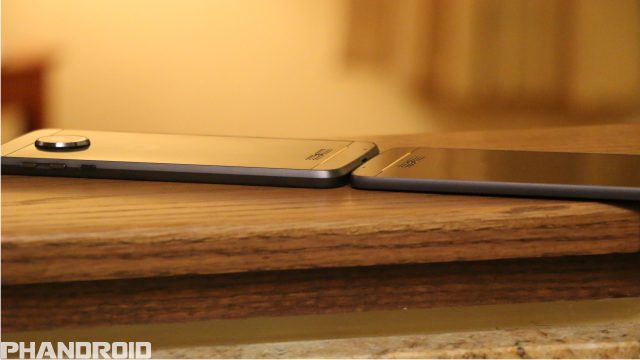
The Moto Z Force Droid is a noticeably thicker and heavier than the Moto Z Droid but isn’t so heavy that it’s uncomfortable to hold in the hand. The thickness and weight are attributed to the larger battery (3,600mAh), and the ShatterShield display found within the device.
ShatterShield is a technology developed by Motorola that was introduced with the Droid Turbo 2 and features 5 different layers:
- Layer 1: Exterior Protective Lens – A protective layer with a proprietary hardcoat designed to guard against dents and abrasion.
- Layer 2: Interior Lens – This highly transparent layer provides a clear protective shield that won’t crack or shatter.
- Layer 3: Dual touch layer – In the event of an impact that damages the primary touch-sensitive layer, a second layer takes over to maintain touchscreen performance.
- Layer 4: Stunning AMOLED display – The flexible AMOLED display absorbs shock and provides amazing picture quality.
- Layer 5: Aluminum chassis – A rigid aluminum chassis provides structural integrity and durability.
With the second generation Moto ShatterShield, Motorola has improved the technology by narrowing the edges of the display, while creating a thinner design. With this new display, the ShatterShield on the Moto Z Force is guaranteed to not crack or shatter upon impact. That doesn’t mean that you should start throwing the device around due to the fact that just because the display won’t crack. It’s important to still be mindful of the fact that there are parts within the devices that may stop working due to the abrupt stoppage of landing on concrete.
Motorola Moto Z Force Droid Specs
Display 5.5-inch AMOLED Processor Qualcomm Snapdragon 820 RAM 4GB Camera Rear: 21MP, f/1.8 aperture, laser autofocus, OIS
Front: 5MP Front, f/2.2 apertureBattery 3,500mAh Dimensions 6.14 x 2.98 x 0.28 inches Weight 5.75 oz
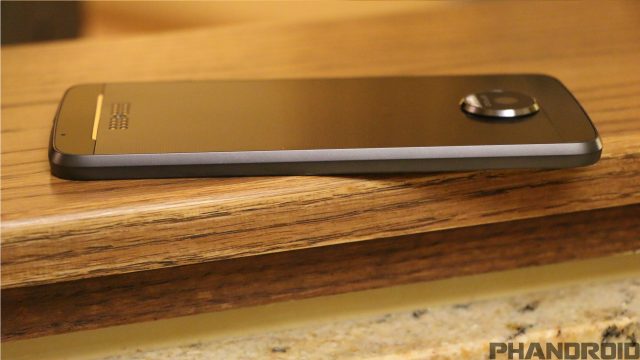
In order to help combat the issues that come with holding a thicker device, Motorola and Lenovo have added a chamfered edge that makes gripping the Moto Z Force Droid a bit easier. While carrying the device around (playing Pokemon GO), the metal back actually allows for some grip from your fingerprints. Of course, this is a moot point if you have a Moto Mod attached but is still convenient nonetheless.
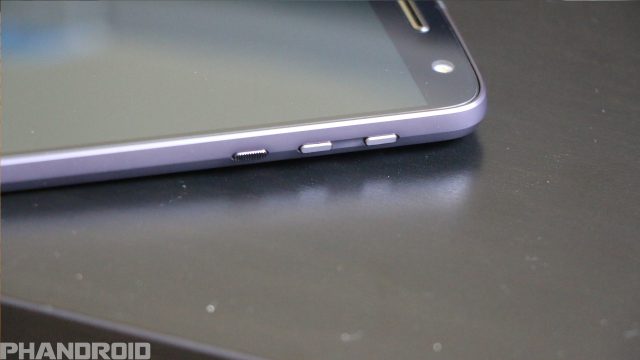
As with the buttons on the Moto Z Force, the buttons on the Force Droid are in the same place, and are still a pain in the rear to easily interact with. The buttons could have either been moved down just a bit, or placed on opposite sides of one another. Another thought that comes to mind was using a volume rocker, which has been used on Motorola devices in the past.
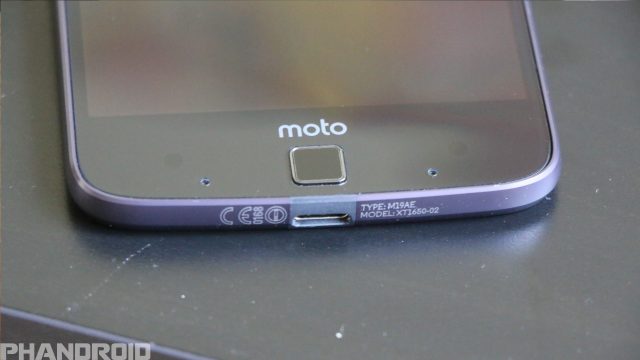
When looking at the fingerprint scanner, it is just as fast as that found on the Moto Z Droid and we have run into no issues with the scanner not registering our attempts to unlock the device. Motorola and Lenovo really hit this one out of the park, and although the company could have opted to place some capacitive buttons on either side of the scanner, allowing the scanner to function as a home button, the fingerprint scanner itself is perfect.
The biggest exclusion of either of these devices is the lack of a 3.5mm headphone jack. Motorola and Lenovo have decided to forgo the convenience of a traditional headphone jack, leaving users to either settle for Bluetooth or the included USB Type-C to 3.5mm headphone jack adapter. This also marks the first time that any device released in the US does not include a headphone jack, but we are expecting more manufacturers to do the same in the very near future (we’re looking at you Samsung and Apple).
Finally, the speaker on the Moto Z Force Droid is just as rough as it is on its brother. The noise can be a bit tinny and unimpressive, but if you attach the JBL SoundBoost Moto Mod there won’t be anything to worry about. Luckily, call quality is still crystal clear with no issues being had during our testing.
Battery Life
Part of the reason behind the Moto Z Force Droid being thicker than the Moto Z Droid is due to the larger battery. Packed in this device is a non-removable 3,500mAh battery that Motorola is stating will last for 40 hours. As someone who is always on their devices, this is an unrealistic number to reach, but the Moto Z Force Droid definitely gets me through a full day of heavy usage.
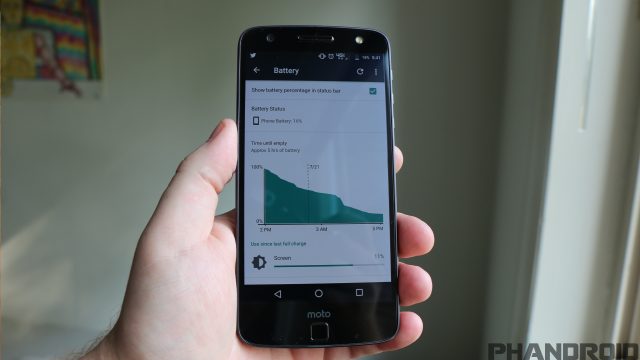
From playing Pokémon GO and responding to various emails and messages, to watching the occasional YouTube video and perusing Twitter, the Moto Z Force Droid’s battery stands up pretty well. In fact, when we went to an event in New York for the announcement of a new ZTE device, I used the Moto Z Force Droid as my primary device, leaving my Nexus 6P in my computer bag.
After leaving at 730AM to catch the train to New York, I was able to use the device until it reached 15% at about 9PM, before I needed to reach for the charger. Mileage may vary per user, but as someone who’s on their phone constantly, this was pretty great. That’s where one of the fun parts comes in to play with this device. Included with the Moto Z Force Droid is the Turbo Power 30 charging brick, which Motorola is touting to give you up to 15 hours of battery life in just 15 minutes.
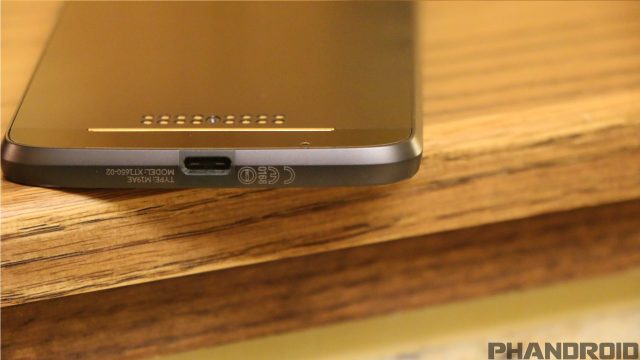
Of course, we had to test just how much the Moto Z Force would be charged depending upon how long it was plugged in for, and found that in the 15 minute time span, we went from 37% to 66%. This marks an increased charge of almost 30% in a short time span, which can be extremely useful if you have just a few minutes to charge up on the go.
The battery life isn’t going to blow your mind, but you will be able to easily get through the day easily. That is, unless you’re hunting for Pokemon for hours on end. In that case, snap on a Moto Mod battery pack, and keep rolling.
Camera
One of the other big changes between the Moto Z Droid and Moto Z Force Droid is the upgraded camera. While the former includes a 13MP rear-facing camera, the latter packs a 21MP camera, and is definitely worthy of being your primary camera.
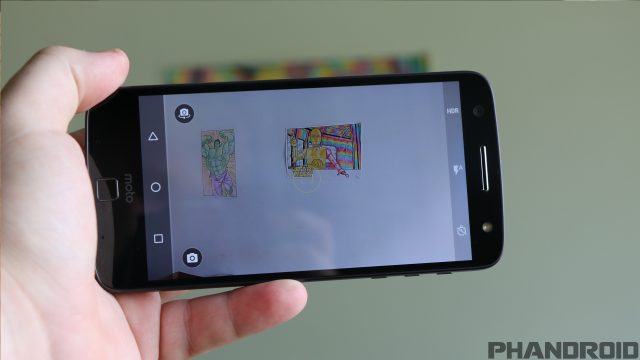
The camera interface is exactly the same as the one found on the Moto Z Droid due to it being Motorola’s home-baked software. So instead of taking time to look at the software, lets take a look at how the camera actually performs.
When looking at a picture taken by the Force Droid, you’ll see a much crisper image, and that’s without adjusting any of the settings within the app itself. Lowlight shots aren’t game-changing, but are definitely adequate enough for just about everyone.
Motorola included Optical Image Stabilization(OIS) and laser-autofocus with both devices, which allow for the device to quickly focus on a subject, but there were some qualms while trying to take pictures of a fountain. While the rest of the image was just okay, the fountain itself looked a bit off. Mileage may vary from user to user, but it’s something to keep in mind if you want to take a picture of the dogs in the park, or your kids running around.
Other than trying to take good pictures of moving subjects, the Moto Z Force Droid does an amazing job of taking a picture in regular lighting. HDR Mode is enabled by default, so some of the results can be really stunning and impressive.
Check out our camera samples to decide for yourself:
The same software features that are found within the Moto Z Droid are here again with the Moto Z Force Droid. So just snap on your Moto Mod of choice and roll through the day with ease.
Moto Mods aren’t for everyone, but if you don’t mind spending a more money, then you’ll vastly increase the capabilities of the Moto Z Force Droid. Motorola has already opened up its Moto Mod Developer Kit for various companies to tinker around with and create something even more awesome than what will be available at the launch.
Conclusion
With the cost of this device priced just $100 more than that of the Moto Z Droid, it’s hard to not recommend the Moto Z Force Droid over its little brother. The better camera, bigger battery, and ShatterShield display give this device everything you need for a great smartphone experience.
Motorola Moto Z Force Droid Rating: star_fullstar_fullstar_fullstar_fullstar_75 (4.9/ 5)
The Good
- Premium design and build quality
- Switching Mods is a breeze
- Stock Android feel
- Good Battery Life
- Good Camera
The Bad
- Fingerprint magnet
- Side buttons are inconvenient
- A little on the heavy side when using Mods
The Bottom Line
The Moto Z Force Droid is definitely the “better” of the two latest devices from Motorola and Lenovo. With its larger battery, better camera, and ShatterShield display you’d be hard pressed to pass this device up if given the opportunity. Even though its a bit heavier and thicker, it’s still thinner than other flagship devices on the market, so we’ll give this one the nod of approval.


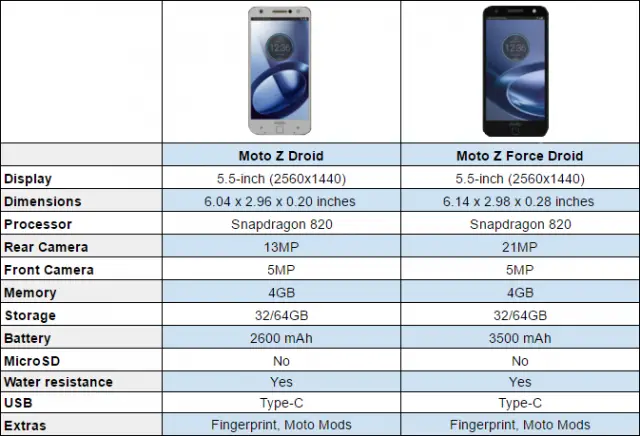









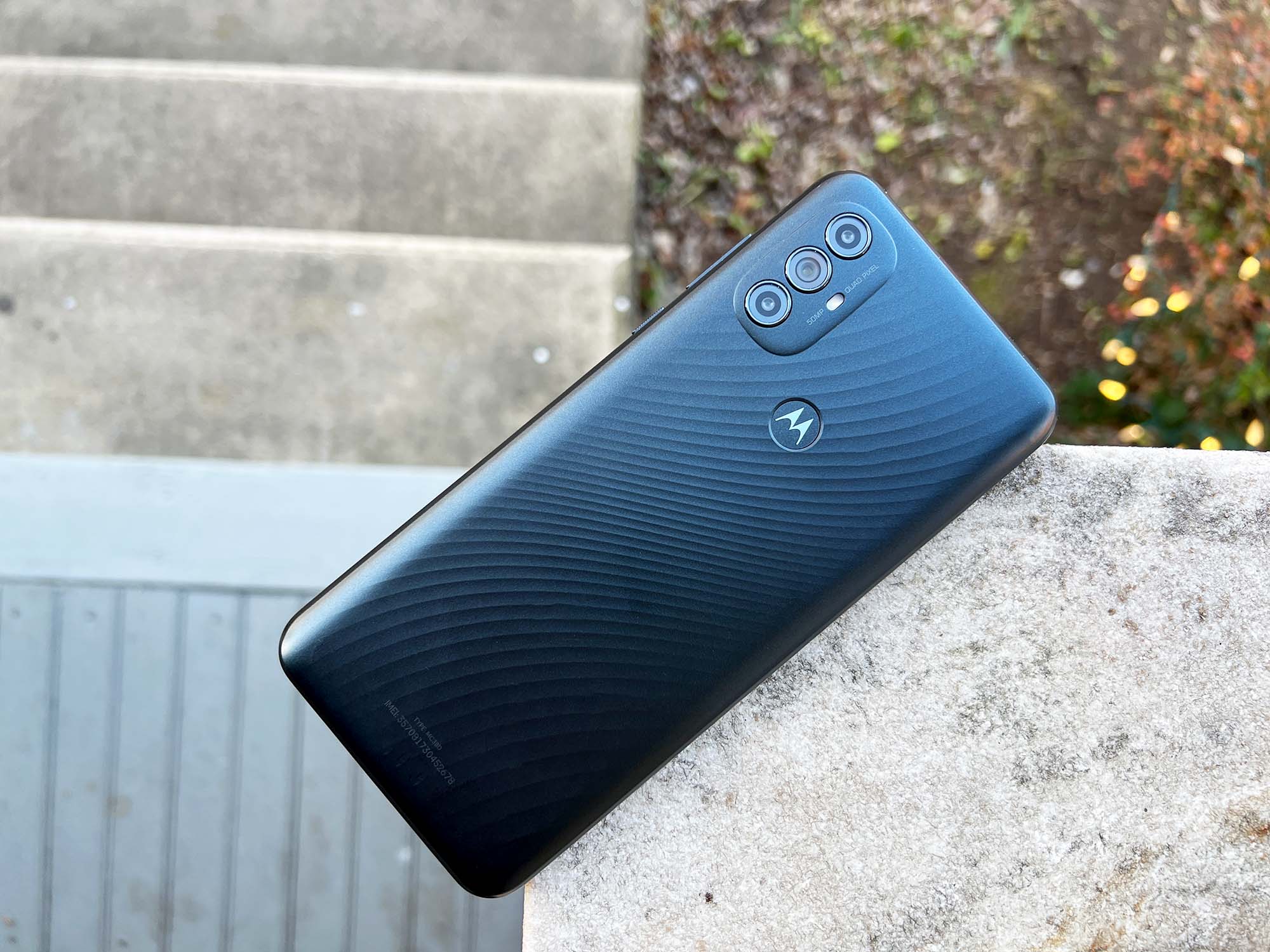
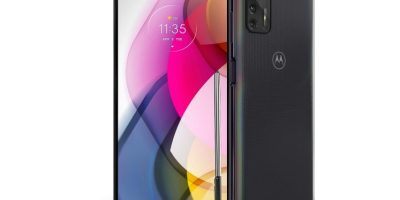

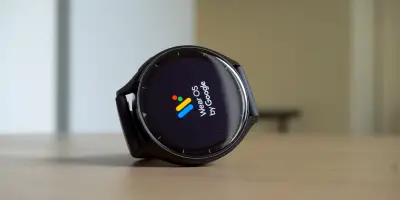



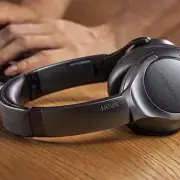

Comments